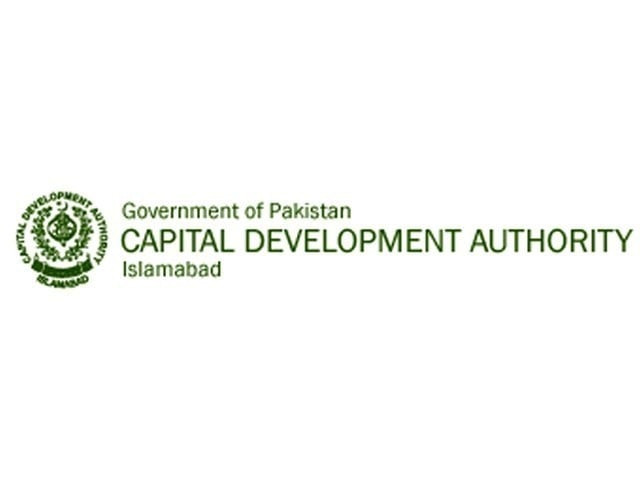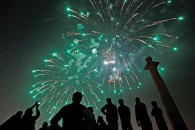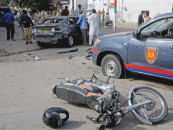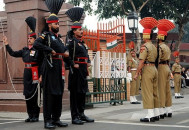Thousands of cars but no place to park
Official admits authority failed to implement its own regulations to enhance parking facilities in plazas

PHOTO: FILE
To make matters worse, the Capital Development Authority (CDA) has actually helped aggravate the problem by first auctioning off additional commercial plots to raise money and by allowing existing plazas to expand by building additional storeys, all the while the civic authority failed to implement its own building regulations.
The crisis can be experienced anytime one visits a commercial markaz, the weekly bazaars or one of the several government office blocks built in the mauve areas in sectors I and H. There is hardly any space to park.
Moreover, neither the CDA nor the Pakistan Environmental Protection Agency (Pak-EPA) has prepared a traffic impact assessment report, nor have the authorities gauged the environmental impact of the fast-rising traffic and shrinking parking facilities.
“The shortage of parking space in Blue Area and other major markets of the city including Aabpara, Super Market, Jinnah Super and Karachi Company, Mauve Area and public building area have been aggravating traffic woes for many years,” a CDA official said.
In 2015 the CDA had notified uniform planning parameters for new buildings being built in areas along the northern section of Jinnah Avenue. The authority’s policy board decided that any parking requirements would be accommodated within the plots — primarily by creating parking in basements or by creating parking floors.
In places such as sectors F-6, F-7, Blue Area, F-8, G-8 and F-9, G-9, additional parking space would be created within the plot in basements. For high-rises it was set at one car space for 1,000 square feet of covered area was mandatory for high rise towers — down from 500 square feet of covered area.
However, this code was not extended to areas located along the southern portion of Jinnah Avenue, including major commercial centres in sectors G-6, G-7 and Blue Area because the size of plots in these areas was smaller.
One can find parked cars spilling over onto road sides, while some even use footpath for parking.
“According to the CDA’s terms and conditions, high-rise towers are bound to provide complete parking solutions within their premises. But in most of these buildings, the entry of public cars are not permitted on the pretext of security,” a CDA official told The Express Tribune on the condition of anonymity. This practice, he admitted, resulted in cars being parked along the side of the roads.
However, the civic authority did finally rise to tackle the parking issue. CDA left parking areas in different parts of the metropolis. Moreover, it identified five places in some of the busiest spots around the city to build multi-storey park-and-ride plazas.
The parking plazas were planned to be built near Sector G-6, Parade Ground Station, Stock Exchange in Sector F-7, F-7 north of Seventh Avenue, F-8, Pakistan Institute of Medical Sciences (PIMS) Hospital and F-8—Kutchery Crossing.
Of these, the CDA built two multi-level public car parks, each with a capacity to park 440 vehicles. One of these was built in Jinnah Super Market (F-7 Markaz).
The exercise, though, was highly educating for the CDA who mainly learnt that it cost them Rs600,000 to build space to park a single car.
Another CDA official explained that parking in multi-storey plazas (class-III shopping plazas) was designed to accommodate people visiting four-storey structures. But adding another storey to the plazas and converting basements for commercial purposes, the parking requirements almost doubled.
“The additional parking requirement was not fulfilled nor have owners made additional payments to CDA for the provision of parking facilities in accordance with their enhanced needs,” the CDA official lamented.
A few years ago, a proposal for imposing a fee on shopping plazas for creating additional parking requirements was turned down by the rejected by CDA board without taking into account the severity of the growing parking issue.
In mauve areas, buildings are bound to provide parking spots within their boundaries. But with the security situation worsening around the country, entry of outside vehicles was all but banned. Any free parking space was also converted into offices.
Private facilities such as five-star hotels have found another way out of this, using green areas along the roads as parking spots.
The only short-term solution to the parking problem is that the CDA at least build all of the parking plazas it had planned while getting a mass transit system off the ground.
Published in The Express Tribune, May 14th, 2018.



















COMMENTS
Comments are moderated and generally will be posted if they are on-topic and not abusive.
For more information, please see our Comments FAQ